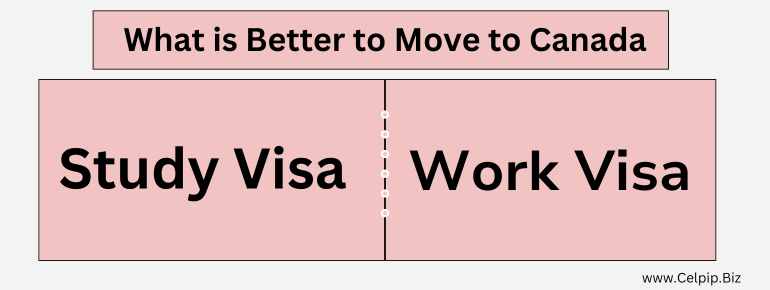Finding Your Canada TEER (NOC): What You Need to Know: Each employment in the Canadian labour market is assigned a code and a job description as part of the National Classification of Occupations (NOC), which is a standardized system.
It is crucial to correctly identify your NOC when applying for immigration to Canada using the Express Entry system. Use this approach to get the points you need to apply through Express Entry, and your professional job history will be recognized and rewarded.
The NOC system switched from the prior NOC 2016 to the new current NOC 2021 as of November 16th, 2022.
The NOC 2021 system changed from skill type to TEER categories, among other adjustments. After November 16th, all new applications must be submitted using the appropriate NOC 2021.
Describe NOC
Each employment in the labour market is assigned a code and a work description using the National Classification of Occupations (NOC), a standardized system used by Immigration, Refugees and Citizenship Canada (IRCC) in Canada.
Every occupation that exists in the Canadian labour market is given a code by the NOC, or National Occupation Classification, which makes use of the NOC matrix.
The NOC codes are used by Immigration, Refugees, and Citizenship Canada (IRCC) to analyze each applicant’s work history.
When applying, candidates must specify the NOC code that best describes their employment history. Candidates for certain economic immigration streams may only apply if they have prior work experience in a profession that corresponds to a given NOC code. Therefore, it is essential that you, as an applicant, understand how NOC codes work.
What categories the CANADA TEER NOC Code falls under
The NOC code you choose for your immigration application is a crucial part of the process. If you apply without carefully considering which NOC code best describes your work experience, your application may be denied.
It is your obligation to make sure you choose the proper NOC code and have the supporting documentation. There is a job title, an introductory statement, and a summary of primary responsibilities for each NOC code.
Pay special attention to the NOC’s lead statement and job title before making a decision. The NOC code connected with your job title may not be an accurate reflection of your experience, or your work history may be applicable to multiple codes.
To be eligible for Canadian immigration, your employment history must match the claims made in the lead statement, and you must have carried out the vast majority of the duties listed.
The NOC assigns jobs to the Training, Education, Experience, and Responsibilities (TEER) category. There are six TEER categories from TEER 0 through TEER 5.
The NOC code falls under the following categories:
- The first digit stands for the broad occupational group;
- The following digit represents the TEER category;
- The major group is represented by the first two digits concatenated;
- The first three digits represent the sub-major group,
- The first four digits the minor group, and
- The unit group or the occupation itself is indicated by the entire five digits.
How to categorize your job history with TEER
TEER 0 refers to management-related occupations, while TEER 1 requires either the successful completion of a university degree—a bachelor’s, master’s, or doctorate—or a number of years of experience in a particular TEER category 2 occupation.
Jobs listed in TEER 2 are those for which a two- or three-year degree from a CÉGEP, a technical institution, or a community college is typically required.
Experience in a TEER category 3 occupation may be required, as well as completion of a two- to five-year apprenticeship program, work in a safety-sensitive field like law enforcement or firefighting, or a combination of these factors.
The TEER 3 includes completing a less than two-year post-secondary education program at a community college, institute of technology, or CÉGEP; an apprenticeship training program lasting less than two years; more than six months of on-the-job training, training courses, or specific work experience with some secondary school education; or several years of experience in a particular occupation from the TEER category 4.
TEER 4 requires secondary school completion or several weeks of on-the-job training with some secondary school education, while TEER 5 only requires a brief work demonstration but no official educational requirements.
Job Requirements
Professions with a TEER level of 0 through 3 are considered high-skilled for immigration purposes, whereas professions with a TEER level of 4 or 5 are considered low-skilled.
Searching the NOC Matrix on the Employment and Social Development Canada (ESDC) website is the simplest approach to determine your occupation’s classification.
Finding your NOC Code
Use the NOC Matrix on the Employment and Social Development Canada (ESDC) website to find your NOC code.
Make sure the lead statement accurately describes your position and that you have completed the majority of the tasks and obligations mentioned under the NOC code.
Keep in mind that just because your job description looks to meet a certain NOC code doesn’t mean it actually does.
In order for the NOC code you select to be accepted, you must provide evidence, such as letters of recommendation from previous employers.
If your profession falls under more than one NOC code, pick the one that best describes your experience.
Remember that visa officials are familiar with the NOC matrix and have the authority to reject your application if they feel that your occupation belongs under a different NOC code.
Summary:
- NOC describes all jobs.
- Express Entry petitions depend on NOC codes.
- Skill kinds changed to TEER categories.
- Five TEER categories.
- TEER 0: Management-related occupations.
- TEER 5: No Formal Education required.
- NOC Matrix to discover your NOC code.






